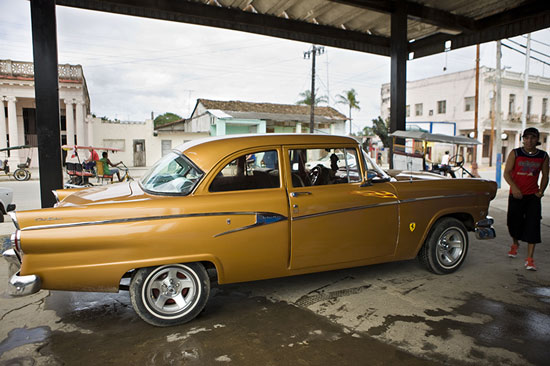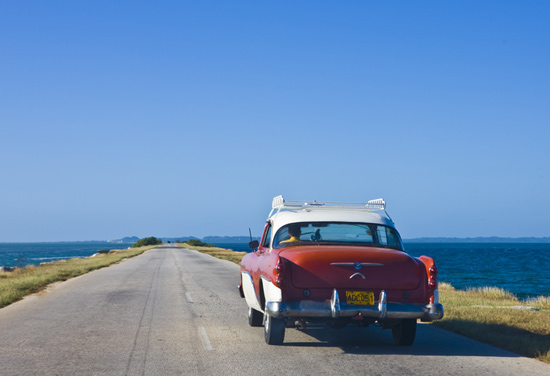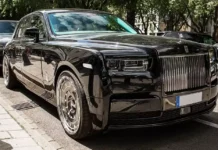Economic embargo prevents new cars from finding their way to Cuba, and for a long time, the country has been known as a paradise for vintage cars. However, many American analysts believe that the fact that old cars are still in daily use has taken away their “vintage car value,” as people have to come up with many ways to keep the aging cars running.
If there is one famous “specialty” of Cuba besides sugarcane and cigars, it is vintage cars. Since Fidel Castro came to power in 1959, he has banned all citizens from importing cars from abroad, from when the government allowed it. This has made Cuba a completely isolated island from the rapid development of the global auto industry.
The silhouettes of vintage cars from the 50s and 60s, or even older, flood the streets of Cuba. From American vintage cars like Ford, Chevy, Dodge; Soviet Union cars like Lada, Mostkvish, Vonga, Kazma; German cars like Volkswagen, Opel Omega; to French cars like Peugeot, Renault … all still circulate on the roads every day.
Over half a century has passed, and now that US President Barack Obama is encouraging Congress to lift the embargo on imports from Cuba, American collectors have the opportunity to access vintage cars from the country. However, many experienced collectors have raised the question: are there still many cars worth buying?
Steve Linden, a vintage car appraiser, said: “The problem is that, in general, collectors know that these cars are not really cherished. They are used as daily transportation.”
A highly valued vintage car lies in its original condition. Cuban residents are not allowed to import cars or spare parts, so they have to “be creative” to replace and repair when the cars break down with parts from different types and sources. Therefore, there are cases where a car may look like an original Dodge Coronet, but under the hood, it may have a Japanese or German engine. In order to make the car run, Cuban people have to sacrifice its originality.

A young man wearing red shoes and a red shirt with a modified car…Ferrari logo looks shiny.
Some collectors have thought about buying cars in Cuba and then replacing foreign parts with original ones, but the story has taken a different turn. The cost of this restoration can range from $40,000 to $80,000. Meanwhile, the price of an equivalent vintage car, in good condition when purchased in the US, is only around $15,000 to $70,000, for example, the case of a 1950 Chevy or a high-end convertible Cadillac.
Jonathan Klinger, spokesperson for Hagerty, a classic car insurance company, agrees that the value of vintage cars in Cuba may have been overstated. “I think some people have this perspective on cars that have been so-called ‘extinct’ for a long time, but many famous cars from the Cuban Grand Prix era have been taken abroad. The remaining cars are only some American cars from the 50s, and it takes a lot of passion and creativity to keep them running on the road.”
Donald Osborne, owner of an automotive valuation service company, said, “There are many rumors that high-performance sports cars have been left behind in Cuba when their owners fled, but no one has ever seen evidence that these cars exist. If they do, some of them, for example, the Mercedes 300SL Gullwing, can be sold for $1 million. As for common Chevy cars on the road that date back to the 1950s, they don’t have much value.”

However, when it comes to the value of a vintage car, in addition to the original price, the rarity, the value lies in the story it tells. In an auction of vintage cars, among cars of the same class, a car brought in from Cuba will definitely fetch a higher price than a car in the US.
According to Time.com
Driver in Bien Hoa rebuilds 1988 Mercedes-Benz 190E: Sacrifices ‘prized possession’ for ‘skeleton’ and transforms it into unique custom build to honor idol
Le Phuc is a passionate car enthusiast from Bien Hoa. He has a special interest in vintage cars, particularly BMW and Mercedes-Benz. With his collection of beautiful cars, he initially didn’t have to invest much time and effort into restoring them. His main tasks involved repainting, refurbishing the interiors, and upgrading the rims.
Soviet Minister’s Car Shines Bright After Rebirth
Over time, especially since the country opened up in the 1990s, Soviet cars have gradually disappeared to be replaced by Japanese, American, and European cars. Many Volga, Lada, and UAZ cars were liquidated from state agencies and transferred to civilian registration, but they did not exist for long before a wave of both imported and assembled cars flooded the streets. Soviet cars slowly drifted away and became a nostalgic reminder of a generation that has gone through two wars.









































